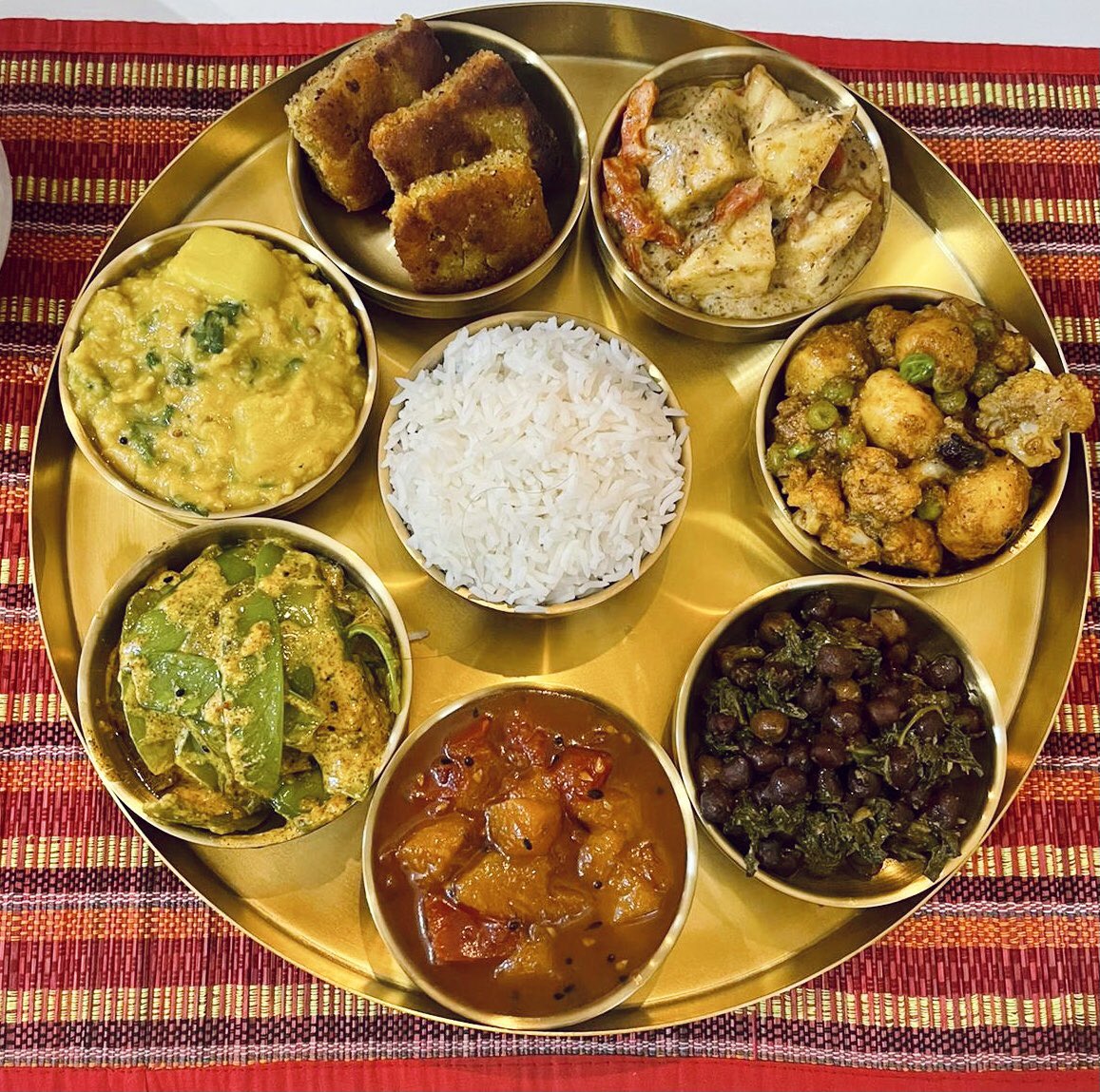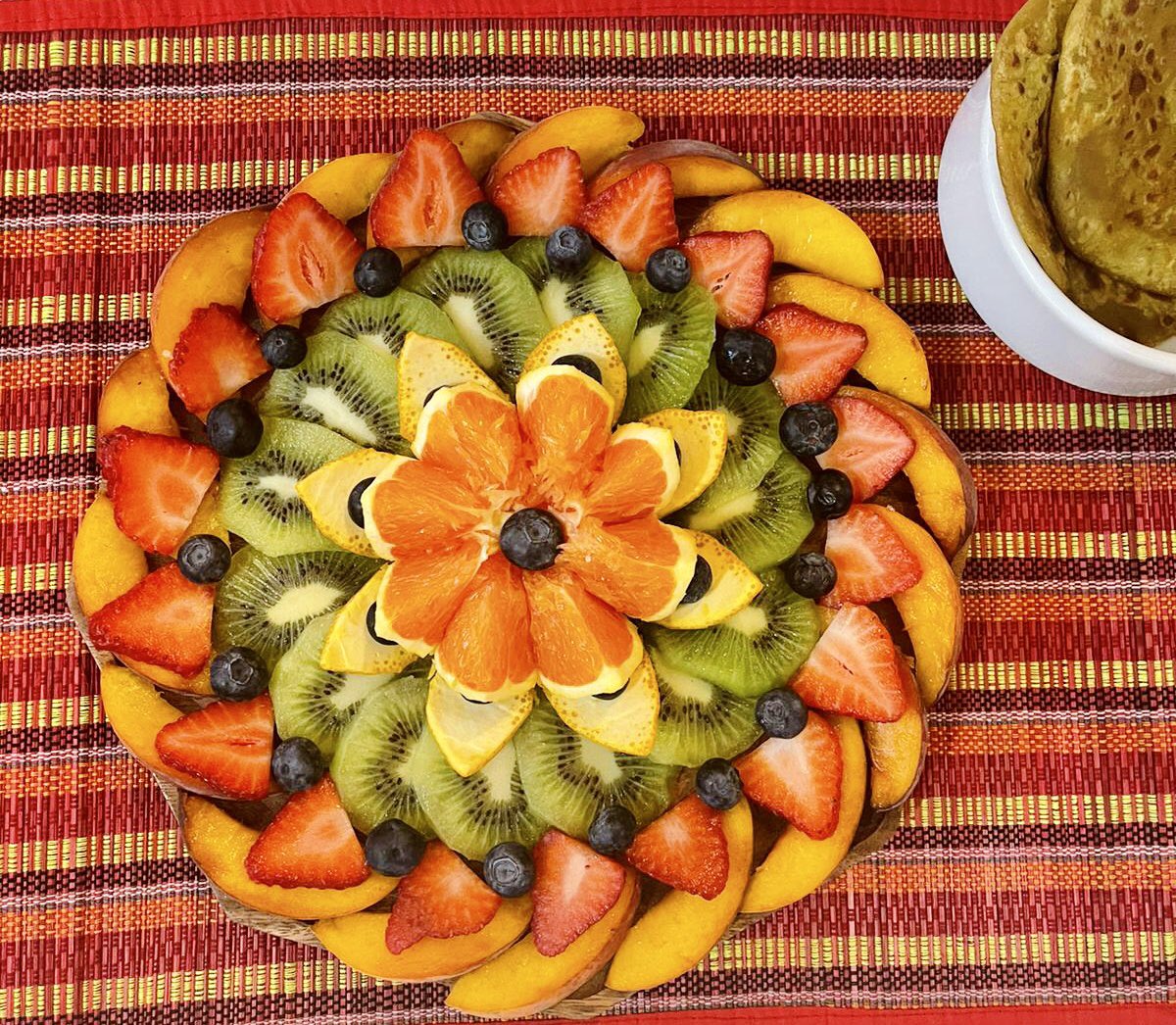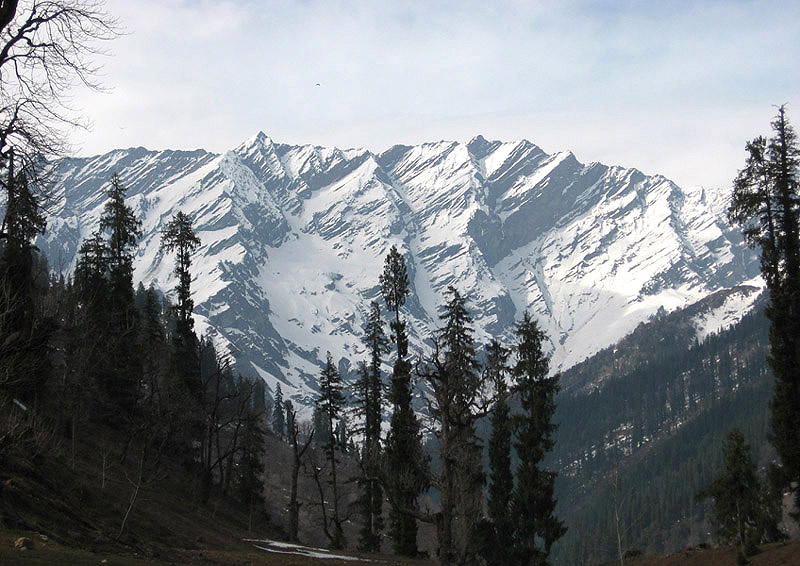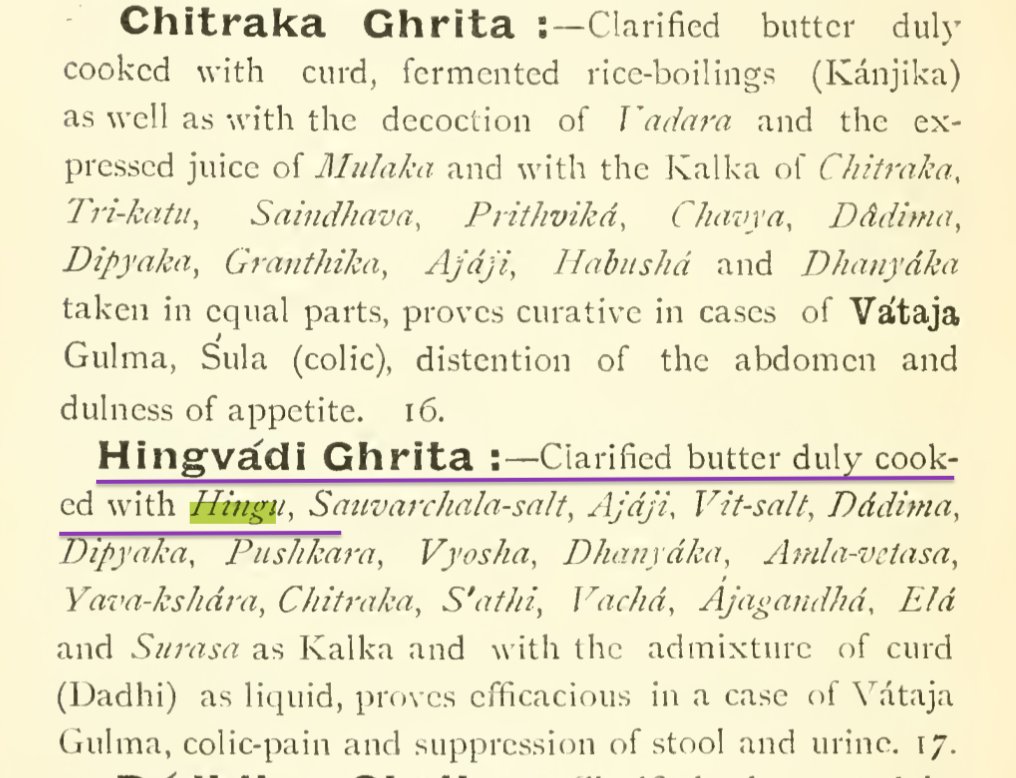
1.
Did you know that the success & “Golden Age” of the Roman Empire was primarily dependent on trade from India? It is estimated that by 1st c. CE, trade from India was financing almost 30% of the Roman Empire’s total income.
Did you know that the success & “Golden Age” of the Roman Empire was primarily dependent on trade from India? It is estimated that by 1st c. CE, trade from India was financing almost 30% of the Roman Empire’s total income.

2.
When Mark Antony was defeated at the Battle of Actium in 31 BCE, Queen Cleopatra prepared an escape to India with the treasure of the Ptolemais. She planned to escape accompanied by Caesarion, her son by Julius Caesar.
When Mark Antony was defeated at the Battle of Actium in 31 BCE, Queen Cleopatra prepared an escape to India with the treasure of the Ptolemais. She planned to escape accompanied by Caesarion, her son by Julius Caesar.

3.
She had enough troops to guarantee the continuance of her royal court in the safety of India & made preparations to launch her ships into the Red Sea by dragging them across the Suez Isthmus. But the Nabataeans of Arabia were her old enemies.
She had enough troops to guarantee the continuance of her royal court in the safety of India & made preparations to launch her ships into the Red Sea by dragging them across the Suez Isthmus. But the Nabataeans of Arabia were her old enemies.
4.
The Nabataean King Malichus sent troops to ambush her army and allied himself with Octavian. Cleopatra’s ships were burned before they could be launched, ending her chance of escaping to India. With the fleet burnt, there was still one final hope for the Ptolemaic dynasty.
The Nabataean King Malichus sent troops to ambush her army and allied himself with Octavian. Cleopatra’s ships were burned before they could be launched, ending her chance of escaping to India. With the fleet burnt, there was still one final hope for the Ptolemaic dynasty.

5.
Cleopatra’s son Caesarion was almost an adult. He was going to inherit Egypt’s Ptolemaic throne & was the only biological heir of Julius Caesar. This made him a serious threat to Octavian who was the grand-nephew of Caesar & adopted heir after Caesar’s death.
Cleopatra’s son Caesarion was almost an adult. He was going to inherit Egypt’s Ptolemaic throne & was the only biological heir of Julius Caesar. This made him a serious threat to Octavian who was the grand-nephew of Caesar & adopted heir after Caesar’s death.

6.
As a desperate last resort, Cleopatra tried to send Caesarion to safety in India far from Roman authority and Octavian. She arranged for him to sail to India accompanied by a staff of royal advisors carrying large treasures from the Ptolemaic treasury.
As a desperate last resort, Cleopatra tried to send Caesarion to safety in India far from Roman authority and Octavian. She arranged for him to sail to India accompanied by a staff of royal advisors carrying large treasures from the Ptolemaic treasury.
7.
Cleopatra hoped that her son could seek asylum in India & one day return to avenge her by leading a military rebellion against Octavian. After Marc Antony’s death, Cleopatra chose to die from the bite of a venomous snake rather than endure the humiliation planned by Octavian.
Cleopatra hoped that her son could seek asylum in India & one day return to avenge her by leading a military rebellion against Octavian. After Marc Antony’s death, Cleopatra chose to die from the bite of a venomous snake rather than endure the humiliation planned by Octavian.

8.
While Caesarion waited at the port of Berenice for the seasonal trade winds , he was tricked by his tutor Rhodon, who was bribed by Octavian. Caesarian returned back to Alexandria & was executed on the grounds that ‘too many Caesars are not a good thing’.
While Caesarion waited at the port of Berenice for the seasonal trade winds , he was tricked by his tutor Rhodon, who was bribed by Octavian. Caesarian returned back to Alexandria & was executed on the grounds that ‘too many Caesars are not a good thing’.

9.
Octavian, the new Emperor’s next ambition was to invade Arabia. So Aelius Gallus the Roman governor of Egypt was ordered to restore shipyards at the northern Red Sea port of Arsine. He was given the task of building 80 triremes and 130 troop-transports to conquer Arabia.
Octavian, the new Emperor’s next ambition was to invade Arabia. So Aelius Gallus the Roman governor of Egypt was ordered to restore shipyards at the northern Red Sea port of Arsine. He was given the task of building 80 triremes and 130 troop-transports to conquer Arabia.

10.
Roman ships were sent to destroy the Sabaean city-port of Eudaimon Arabia (Aden). This raid had immediate consequences for international trade when Indian merchant ships who used to trade with Arabia, arrived at the port to discover it ransacked and its merchandise removed.
Roman ships were sent to destroy the Sabaean city-port of Eudaimon Arabia (Aden). This raid had immediate consequences for international trade when Indian merchant ships who used to trade with Arabia, arrived at the port to discover it ransacked and its merchandise removed.

11.
They had no choice but to sail on & meet their trade contacts at Egypt. This opened up Rome’s access to Indian goods via Egypt. The Romans could now send many more ships to India to get merchandise for their Empire.
They had no choice but to sail on & meet their trade contacts at Egypt. This opened up Rome’s access to Indian goods via Egypt. The Romans could now send many more ships to India to get merchandise for their Empire.

12.
The Greek geographer Strabo, an associate of Aelius Gallus, accompanied the governor on an official tour along the Nile River. The group travelled past the city of Coptos where Strabo heard a report that over 100 Roman ships were sailing direct from Egypt to India every year.
The Greek geographer Strabo, an associate of Aelius Gallus, accompanied the governor on an official tour along the Nile River. The group travelled past the city of Coptos where Strabo heard a report that over 100 Roman ships were sailing direct from Egypt to India every year.

13.
He reported: “When Gallus was the prefect of Egypt, I accompanied him along the Nile River as far as Syene and the frontiers of Aethiopia. I learned that as many as 120 vessels were sailing from Myos Hormos to India.” This was more than 6 times the ships sent by Egyptians.
He reported: “When Gallus was the prefect of Egypt, I accompanied him along the Nile River as far as Syene and the frontiers of Aethiopia. I learned that as many as 120 vessels were sailing from Myos Hormos to India.” This was more than 6 times the ships sent by Egyptians.

14.
The world changed when Rome annexed Egypt and gained access to the Red Sea shipping-lanes that led into the Indian Ocean. Within a decade, Roman ships sailing to India had inundated the Mediterranean markets with goods from India.
The world changed when Rome annexed Egypt and gained access to the Red Sea shipping-lanes that led into the Indian Ocean. Within a decade, Roman ships sailing to India had inundated the Mediterranean markets with goods from India.
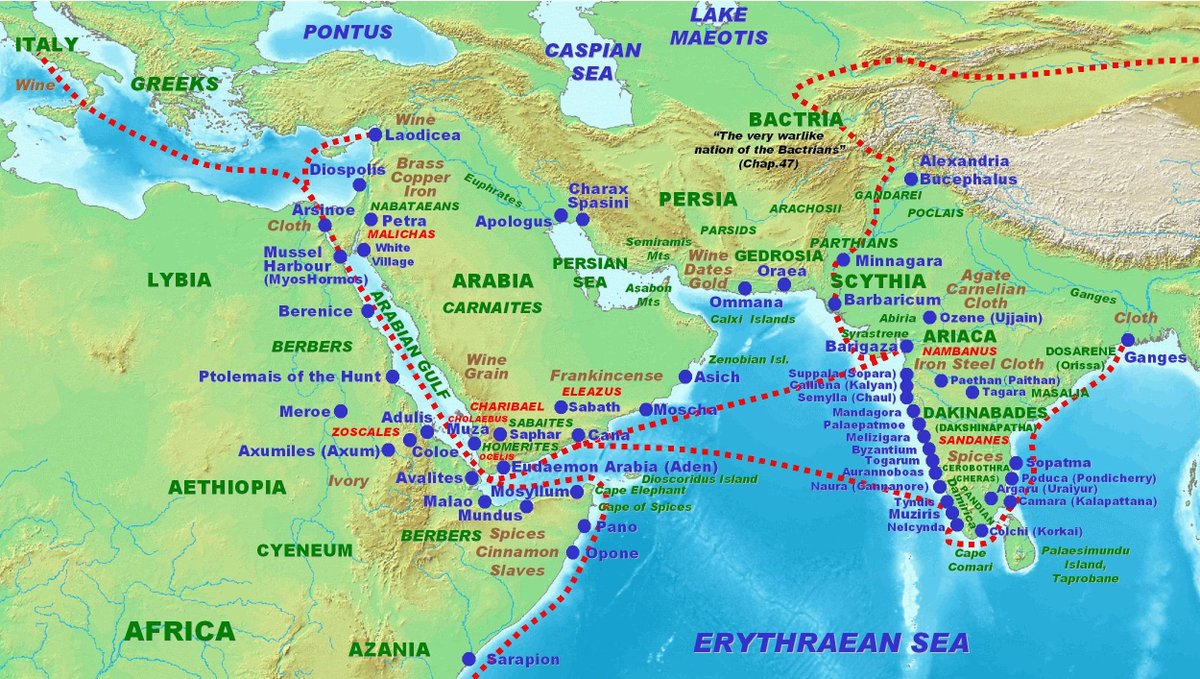
15.
These imports included products such as incense, spices, ivory, wigs, dried flowers, gemstones and silks. The Roman Empire imposed a quarter-rate import tax known as the tetarte on these commodities and as trade increased, the tax generated huge new revenues for Rome.
These imports included products such as incense, spices, ivory, wigs, dried flowers, gemstones and silks. The Roman Empire imposed a quarter-rate import tax known as the tetarte on these commodities and as trade increased, the tax generated huge new revenues for Rome.

16.
At its height, the Roman Empire had 300,000 professional soldiers to defend its vulnerable frontiers and maintain order amongst subject nations. This army depended upon the finance that was obtained from taxes imposed on international business.
At its height, the Roman Empire had 300,000 professional soldiers to defend its vulnerable frontiers and maintain order amongst subject nations. This army depended upon the finance that was obtained from taxes imposed on international business.

17.
India added huge value to Roman gold & silver resources, which were shipped as bullion to purchase Indian goods which Romans resold at great profit along with the income from customs duties. This paid for the Roman army in expanding & defending the empire
India added huge value to Roman gold & silver resources, which were shipped as bullion to purchase Indian goods which Romans resold at great profit along with the income from customs duties. This paid for the Roman army in expanding & defending the empire

18.
Roman access to Chinese & other Asian goods was made possible primarily by Indian merchants. Although Rome did import several Chinese goods such as Silk & porcelain, Indian products were at least 10 times more in demand than the Chinese goods.
Roman access to Chinese & other Asian goods was made possible primarily by Indian merchants. Although Rome did import several Chinese goods such as Silk & porcelain, Indian products were at least 10 times more in demand than the Chinese goods.

19.
By the 1st c. CE, yearly imports to Rome via the Indian Ocean were more than 1,000 MM sesterces (today’s $3 Billion) which raised 250 MM sesterces in tax revenue for the Roman government. By 1st c. CE, trade from India financed almost 30% of the Roman Empire’s income.
By the 1st c. CE, yearly imports to Rome via the Indian Ocean were more than 1,000 MM sesterces (today’s $3 Billion) which raised 250 MM sesterces in tax revenue for the Roman government. By 1st c. CE, trade from India financed almost 30% of the Roman Empire’s income.

20.
India was the most prosperous & significant world power in ancient times. The huge role that trade from India played in the success of the Roman Empire is relatively unknown. It was the “Sone ki Chidiya” that fueled the “Golden Age” of the Roman Empire.
India was the most prosperous & significant world power in ancient times. The huge role that trade from India played in the success of the Roman Empire is relatively unknown. It was the “Sone ki Chidiya” that fueled the “Golden Age” of the Roman Empire.
References
Raoul McLaughlin. “The Roman Empire & the Indian Ocean”
Cambridge Ancient History, volume 11
Hopkins, ‘The Political Economy of the Roman Empire’
Greene, Archaeology of the Roman Economy
Raoul McLaughlin. “The Roman Empire & the Indian Ocean”
Cambridge Ancient History, volume 11
Hopkins, ‘The Political Economy of the Roman Empire’
Greene, Archaeology of the Roman Economy
• • •
Missing some Tweet in this thread? You can try to
force a refresh


